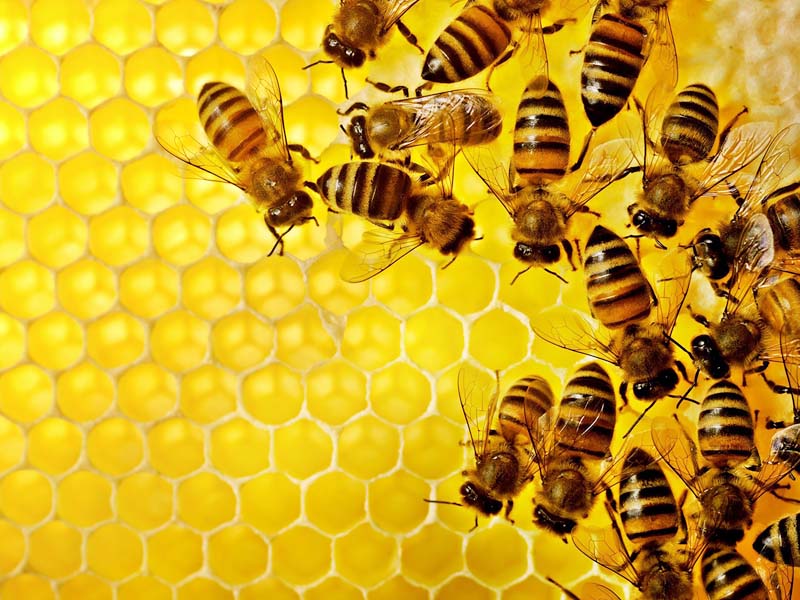
- 5 December 2023
Share:
Worker bees are unfairly stereotyped as cogs in a machine, toiling away with little recognition or impact. Sometimes the term is used within organizations to describe people with little significance or creativity. This is so wrong! Bees play a giant role in our world, challenging the notion that size has any correlation to significance.
Nature provides invaluable lessons from the bees, highlighting the impact of small acts. Like in Nature, the “bees” in our organizations significantly impact our entire systems.
Let’s step back for a moment and review a few facts on bees’ pivotal role in our food supply. According to Farmer.gov, honeybees pollinate 80% of all flowering plants and more than 130 types of fruits and vegetables. The USDA reports that 35% of the world’s food crops depend on animal pollinators to reproduce. That’s one out of every three bites of food you eat.
Sensitive Dependence
Unfortunately, hierarchical structures often overlook the impact of small-scale contributors. The belief that impactful actions only come from high-ranking positions obscures the recognition of smaller, influential contributions. This mindset limits the understanding of diverse contributions within organizations and communities.
Conversely, we need to recognize that “smaller” players are critical to the health and resilience of larger organizations. This perspective shift is also vital for understanding and valuing contributions beyond positional power.
In a connected world, even minor actions can lead to significant consequences. The concept of sensitive dependence on initial conditions, illustrated by chaos theory, exemplifies this. Small triggers result in substantial changes in complex systems. Like Nature, regenerative systems exploit this dependence and create conditions that accelerate positive change. This includes:
- Fostering positive cultures that attract people to contribute to the organization.
- Gathering deeper insights into the dynamics, relationships, and patterns within communities and organizations.
- Constantly seeking and recognizing the impacts of small individual contributions.
Pollinating New Ideas
In Nature, pollination is an instinctual response in a mutualistic relationship. When bees don’t find nectar in a flower, they don’t continue to seek out that specific plant. That behavior is embedded in Nature’s design.
If the flower doesn’t serve the bee’s purpose, the bee finds a different flower.
As humans, we’re attached to habitual ideas that we continue to pollinate across and between our organizations and communities. In that way, we keep returning to the flowers that don’t serve us!
For example, leaders who serve on corporate or non-profit boards learn how to govern an organization from that experience. They often stick to these lessons rigidly when they serve on another board or take a new leadership position. They assume what works in one organization (or ecosystem) will work in another. Sometimes, they defend those ideas so strenuously they threaten the life of the organization.
I realize it’s important to keep our hard-earned lessons as we move from place to place. However, organizations rely on ideas, especially new ideas, to stimulate innovation. If we want to facilitate innovation in our organizations, we have to let new ideas flow through relationships. People have to be motivated (and feel safe) to share ideas. Innovation must arise across and between teams and departments. That is the organizational form of pollination. That’s why our “worker bees” are the most important people in our ecosystem.
When we recognize and reward the importance of the small acts of our "worker bees," we gain a more holistic and inclusive view of our ecosystems and organizations.
Bees Hate Micromanagers
When bees outgrow their hive the queen bee doesn’t direct the process of finding a larger place. Instead, the bees anticipate the need, and the scouts go in search of a new hive on their own. As each scout bee returns, they do what’s called a waggle dance, where they wiggle their tail and orient their bodies in the direction to fly. That tells other bees the direction and distance of a possible new hive.
At this point, those other bees fly off to look at the options. When they return, they join the particular bee dance that represents the location they think would be a good choice. With wide exploration and lots of vetting, the bees eventually decide. When it’s time to go, the bees swarm and move.
Unfortunately, our organizations aren’t usually designed to support or encourage these self-directed activities.
With a micromanager as a boss, it doesn’t take an employee long to learn their best option is to wait to be told what to do. The reward system supports compliance, not initiative.
Obviously, this behavior doesn’t support self-organization and impedes innovation and the pollination of ideas.
In our organizations, we must evaluate our employees’ ability to take initiative in their work and align their actions with the organization’s larger purpose. We should be recognizing people who do this rather than rewarding the “yes” people who stroke the egos of our autocratic leaders.
Bees and Balance
We know that bees are some of Nature’s best workers! Bees work hard all summer, pollinating, gathering nectar, and stockpiling honey. In the winter, they remain active but shrink their numbers from about 50,000 bees to 20,000 bees per hive. These buzz-worthy creatures eat stockpiled honey for energy and shiver their flight muscles to make heat. They’re so efficient they can keep the queen’s spot in the hive at 94 degrees Fahrenheit all winter!
Fun fact: A typical “fuel bill” for a hive during a long Minnesota winter, where I live, is about 75 to 100 pounds of honey.
Bees have a lot to teach us about rest and its positive impact on productivity. There is a season for work and a season for rest. We must learn to connect the need for rest with the level of productivity we see in bee colonies.
In our organizations, we don’t “do” rest very well. The prevailing philosophy is that productivity needs to be high, 24/7. We assume people can work non-stop and remain at peak performance. Obviously, these are myths. Over time, a lack of appreciation for rest leads to a degenerating system. We burn out the talent that is driving innovation and productivity in the organization, and our bees eventually leave the hive.
Smart organizations know there must always be a cycle of activity and rest. They encourage and even reward employees for taking time off. Because of this practice, these companies are typically the most innovative and profitable.
If Bees Can, We Can
As humans, we have consciousness, larger brains, and the capacity to care for something bigger. And yet, we create hierarchical structures, supervision, control mechanisms, and processes that diminish the activities and engagement that are proven to boost innovation, accelerate productivity, and contribute to a higher purpose.
The humble worker bee serves as a powerful metaphor for understanding impact beyond size and power. If bees can cross-pollinate and self-organize to find resources and solve problems, we can too. We can unleash this same level of self-organization to serve the higher purpose of our organizations.
When we recognize and reward the importance of the small acts of our “worker bees,” we gain a more holistic and inclusive view of our ecosystems and organizations. And this leads to a much healthier and more resilient world.
This blog was originally printed in Dr. Allen’s newsletter, Nature-Based Leadership and was modified and reprinted with her permission.

Based in the U.S., Dr. Kathy Allen is a coach, thought leader and trusted advisor to leadership teams around the world. Her groundbreaking book, Leading from the Roots, drew key design principles and dynamics from living systems and applied them to leadership and decision-making in organisations, acknowledging the unique and interdependent nature of each group, enterprise and the larger system in which they operate. Kathy’s work provides a framework that challenges traditional views and creates a new paradigm for mission-driven, purpose-filled leadership anchored firmly in the design of Nature.


